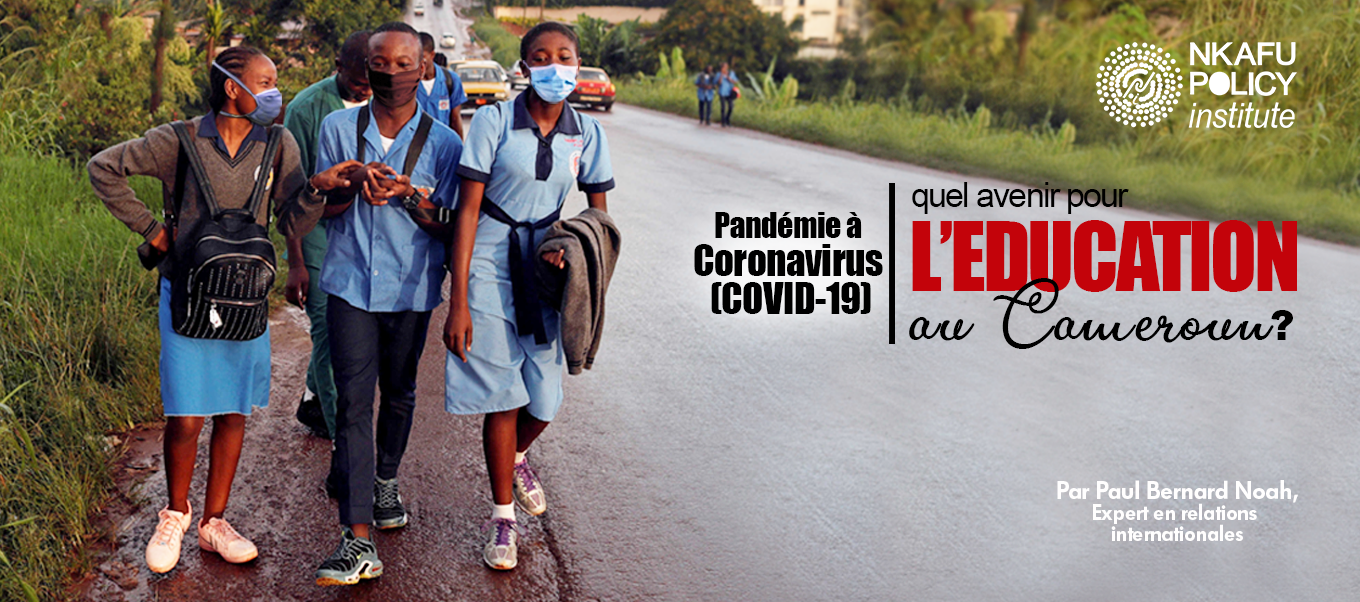Pandemic Coronavirus (COVID-19), What Future For Education In Cameroon?

Introduction
As of December 2019, Chinese Public Health authorities reported several cases of acute respiratory syndrome in Wuhan City, Hubei Province, China. Chinese scientists quickly identified a new coronavirus as the main causative agent [1]. This is a new strain of coronavirus that has not been previously identified in humans. The virus responsible is called severe acute respiratory syndrome coronavirus 2 (SARS-CoV-2) [2].
Since January 2020, the coronavirus epidemic has spread to several other countries around the world, with outbreaks and clusters of the disease seen in Asia, Europe, Australia, America and Africa including Cameroon, before to be declared a pandemic on March 11, 2020 by the World Health Organization [3].
Since then, the heart of the planet has been beating to the rhythm of COVID-19. The rapid spread of the pandemic has led to major upheavals, putting many sectors of life to the test, with the immediate consequence: nothing works as before, almost everything, idling, or forced to a halt. . In several countries around the world, including the 53 officially affected by the pandemic on the African continent [4] including Cameroon, COVID-19 will inevitably, but then inevitably, be a serious blow to the education sector. Cameroon, which is our study setting here, would not be immune from it and some indicators already seem to indicate hazard fires.
In an attempt to deal with this, many countries have adopted restrictive measures ranging from closing borders to total or partial confinement of populations. Thus, like most governments in the world, Cameroon has temporarily closed since March 18, 2020 throughout its territory [5], primary, secondary and university education establishments in order to contain the spread of the pandemic. Covid-19.
Despite the battery of drastic measures taken by states around the world to combat the invisible “enemy”, including in this case the 13 measures decreed by the Cameroonian government [6], the virus has fatally continued its margin of progress , with today more than 270,000 killed in the world according to a count of AFP [7] cited by France 24 [8] in its crawl of May 9, 2020. There is no doubt that a sector as sensitive and delicate as that education risks lasting damage if nothing is done. Our analysis will lead us to take a panoramic look at a pedal with four detents, namely the impact generated by the Covid-19 first, on the pedagogy, then, on the content of the training, the budget, and finally, on the organization and very functioning of the school.
Pedagogical framework of the impact
The educational impact here refers to the constraints associated with modifying the usual or traditional teaching method. The lessons require distance training mechanisms. This has a higher cost than face-to-face training insofar as it (distance training) incorporates personalized approaches. Example, for a class of 24 students, face-to-face the teacher addresses the 24 simultaneously, and each can ask a question with the 24 present, or in the context of distance training, each of the 24 will ask his question in a personalized and the teaching response will be personalized. This inevitably increases the workload of the teacher, and here, increasing costs means increasing costs. This therefore requires that teachers be trained differently [9], that the extra work be considered in terms of payment (the counterpart of the work being the remuneration), that teaching aids be the object of acquisition.
The recommendations to be formulated here would mainly be to improve the working environment and the remuneration of teachers because the mechanism costs more for trainers and requires more work from them insofar as they need the appropriate teaching aids since they do not not going to write on the blackboard (they need high-performance phones, cutting-edge machines, high-performance applications, a permanent and better internet connection. This change in pedagogy costs more both learners and teachers. institutional level, the State at its level can take charge of this in two ways: by improving the purchasing power of the populations in order to limit the impact on education, by improving the remuneration of teachers. a logical increase in the budget devoted to the education sector in order to cushion the effects of the shock.Pedagogy and training go hand in hand, never one s years the other. If one is affected, the other will be no less. So, one wonders, if the first undergoes transformations, what will be



